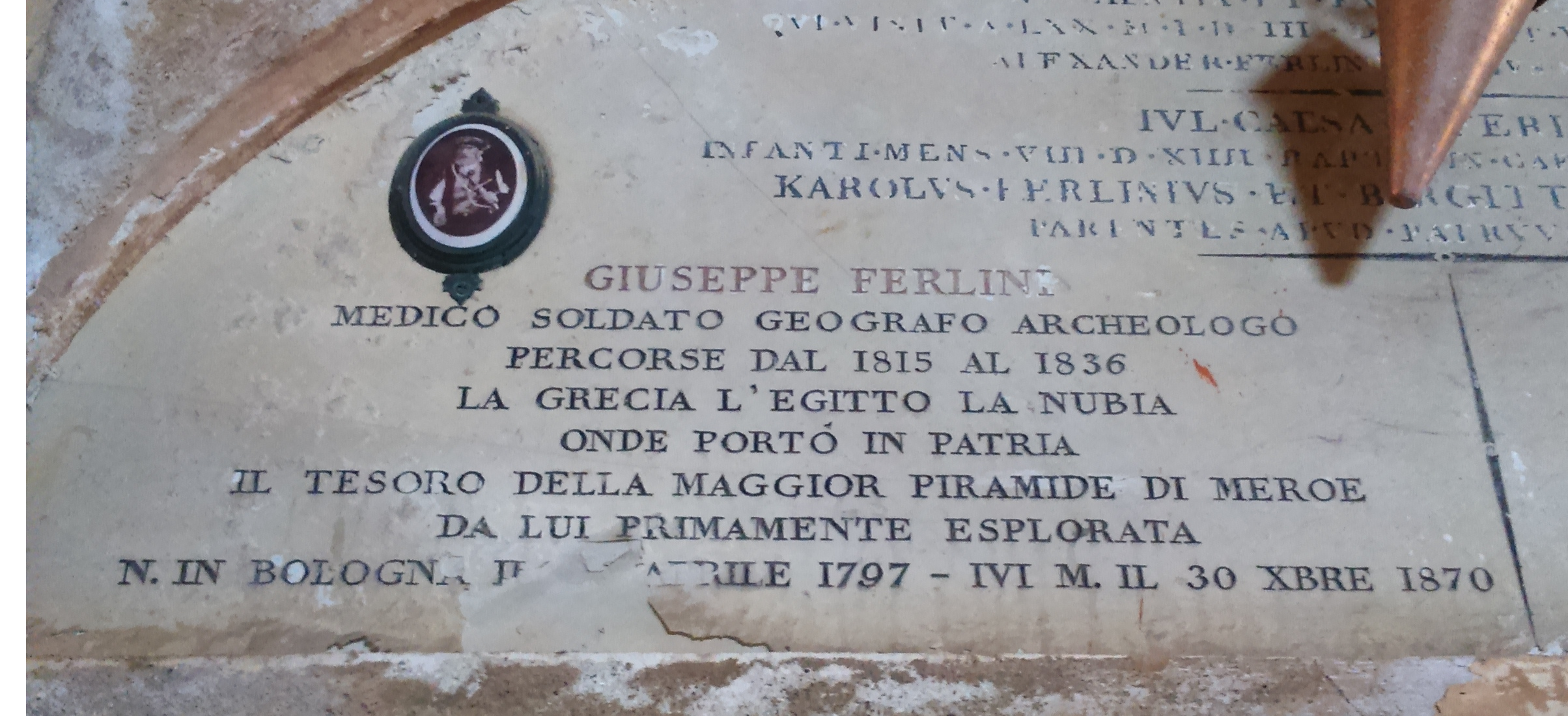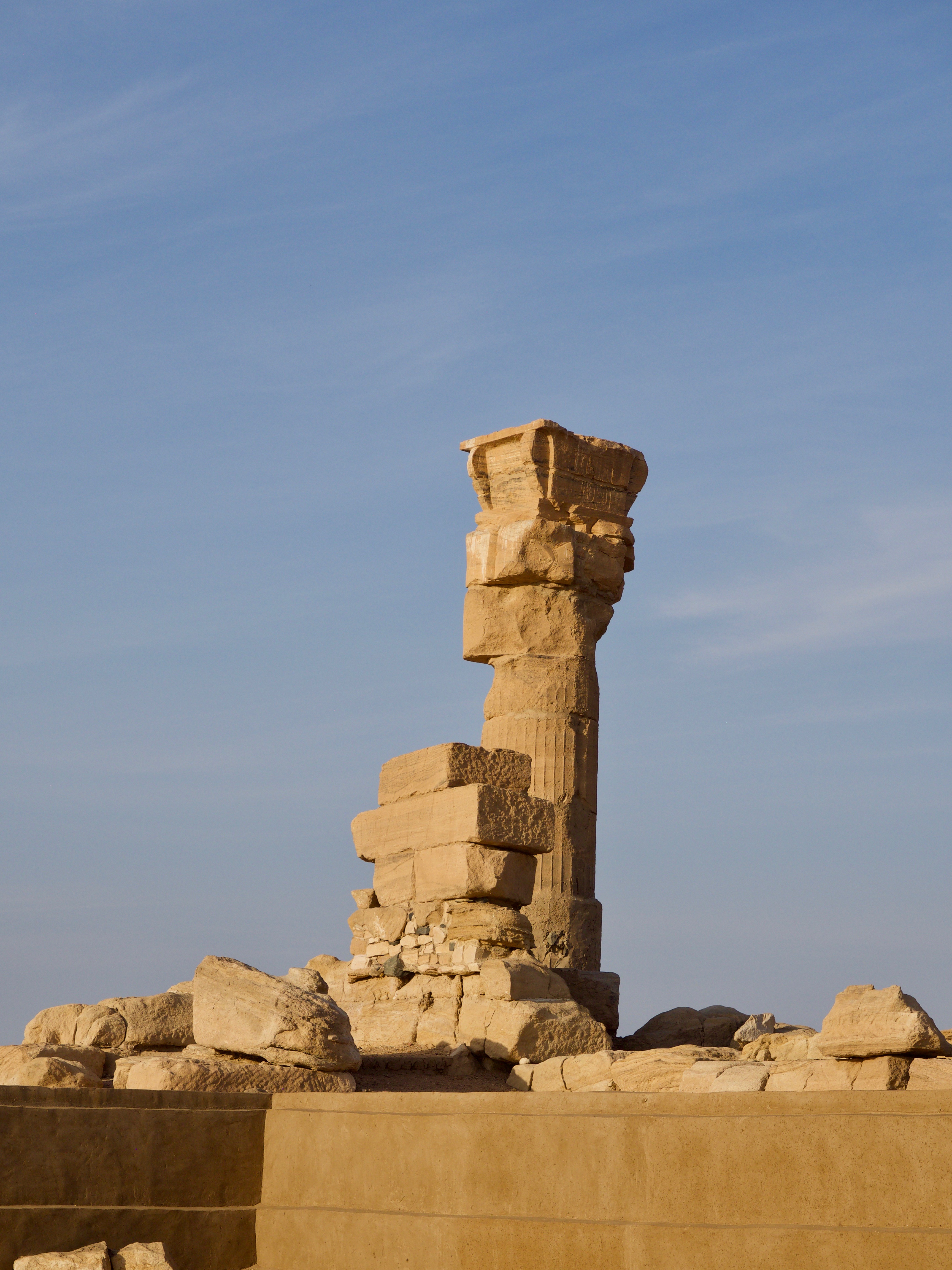|
Nubian Pyramids
The Nubian pyramids were built by the rulers of the ancient Kushite kingdoms. The area of the Nile valley known as Nubia, which lies within the north of present-day Sudan, was the site of three Kushite kingdoms during antiquity. The capital of the first was at Kerma (2500–1500 BCE). The second was centered on Napata (1000–300 BCE). The third kingdom was centered on Meroë (300 BCE-AD 300). The pyramids are built of granite and sandstone. Heavily influenced by the Egyptians, Nubian kings built their own pyramids 1000 years after Egyptian burial methods had changed. In Nubia, pyramids were built for the first time at El Kurru in 751 BC. The Nubian-style pyramids emulated a form of Egyptian private elite family pyramid that was common during the New Kingdom. There are twice as many Nubian pyramids still standing today as there are Egyptian. Forty of the pyramids were partially demolished by an Italian treasure hunter, Giuseppe Ferlini, in the 1830s. The Nubian pyramids ar ... [...More Info...] [...Related Items...] OR: [Wikipedia] [Google] [Baidu] |
Pyramids Of Meroë
The Pyramids of Meroë are part of the larger group of Nubian pyramids, built at the time of the Kushite Kingdom over a period close to a millennium. Near Meroë, three royal cemeteries were constructed: * South Cemetery features nine royal pyramids. Four of the pyramids belonged to Kings and five belonged to queens. One hundred and ninety-five other tombs complete the cemetery. * North cemetery contains forty-one royal pyramids. Thirty belonged to kings, six to queens and five to other royals. The cemetery has three more non-royal tombs for a total of forty-four. * West cemetery is a non-royal site. It contains some one hundred and thirteen tombs.G. A. Reisner, The Meroitic Kingdom of Ethiopia: A Chronological Outline, The Journal of Egyptian Archaeology, Vol. 9, No. 1/2 (Apr., 1923), pp. 34–77 On 8 September 2020, the pyramids were threatened for the first time by floods. Southern Cemetery at Begarawiyah The southern cemetery is the burial place of the Meroitic side of the ... [...More Info...] [...Related Items...] OR: [Wikipedia] [Google] [Baidu] |
Giuseppe Ferlini
Giuseppe Ferlini (April 23, 1797 – December 30, 1870 Epitaph from his gravestone in the Certosa di Bologna (see picture).) was an Italian soldier turned treasure hunter, who robbed and desecrated the pyramids of Meroë. Biography Born in Bologna, in 1815 he travelled across Greece, and later he reached Egypt where he joined the Egyptian Army during the conquest of Sudan. In 1830 he became surgeon major. Under the army, he stayed at Sennar and then at Khartoum where he met the Albanian merchant Antonio Stefani., p. 166 Later he decided to desert and devote himself to treasure-hunting, determined to either "return home penniless, or carrying unprecedented treasures". Along with Stefani, Ferlini organized an expedition that left for Meroë on August 10, 1834. Having asked and obtained from the Governor-General of the Sudan, Ali Kurshid Pasha, the permission to perform excavations at Meroë, and spurred by legends from local workers who talked about 40 '' ar ... [...More Info...] [...Related Items...] OR: [Wikipedia] [Google] [Baidu] |
Sedeinga
The Sedeinga pyramids are a group of at least 80 small pyramids near Sedeinga, Sudan, built ca. 1 BCE. They were discovered between 2009 and 2012 and date to the time of the Kingdom of Kush, an ancient kingdom in Nubia. They range in size from about to wide. Location The Sedeinga pyramid site is located in northern Sudan on the west bank of the Nile River. It lies roughly 60 miles (100 km) north of the Nile's third cataract, and northwest of Meroë, the Meroitic period capital of the Kingdom of Kush, where similar pyramids have been found. Isolated from the greater part of Kush, Sedeinga is found alone in the desert along an ancient trade route. This route connected the Kingdom of Kush directly with Middle Egypt, suggesting that Sedeinga may have been a trade settlement. Located not far from the Egyptian border, Sedeinga would have had first access to the goods brought by Egyptian traders, which might explain the origin of the wealth demonstrated in the burial pyramids.Powel ... [...More Info...] [...Related Items...] OR: [Wikipedia] [Google] [Baidu] |
Khartoum
Khartoum or Khartum ( ; ar, الخرطوم, Al-Khurṭūm, din, Kaartuɔ̈m) is the capital of Sudan. With a population of 5,274,321, its metropolitan area is the largest in Sudan. It is located at the confluence of the White Nile, flowing north from Lake Victoria, and the Blue Nile, flowing west from Lake Tana in Ethiopia. The place where the two Niles meet is known as ''al-Mogran'' or ''al-Muqran'' (; English: "The Confluence"). From there, the Nile continues north towards Egypt and the Mediterranean Sea. Divided by these two parts of the Nile, Khartoum is a tripartite metropolis with an estimated population of over five million people, consisting of Khartoum proper, and linked by bridges to Khartoum North ( ) and Omdurman ( ) to the west. Khartoum was founded in 1821 as part of Egypt, north of the ancient city of Soba. While the United Kingdom exerted power over Egypt, it left administration of the Sudan to it until Mahdist forces took over Khartoum. The British att ... [...More Info...] [...Related Items...] OR: [Wikipedia] [Google] [Baidu] |
Taharqa
Taharqa, also spelled Taharka or Taharqo ( Egyptian: 𓇿𓉔𓃭𓈎 ''tꜣ-h-rw-k'', Akkadian: ''Tar-qu-u2'', , Manetho's ''Tarakos'', Strabo's ''Tearco''), was a pharaoh of the Twenty-fifth Dynasty of Egypt and qore (king) of the Kingdom of Kush (present day Sudan), from 690 to 664 BC. He was one of the " Kushite Pharaohs" who ruled over Egypt for nearly a century. Early life Taharqa was the son of Piye, the Nubian king of Napata who had first conquered Egypt. Taharqa was also the cousin and successor of Shebitku. The successful campaigns of Piye and Shabaka paved the way for a prosperous reign by Taharqa. Ruling period Taharqa's reign can be dated from 690 BC to 664 BC. Evidence for the dates of his reign is derived from the Serapeum stele, catalog number 192. This stela records that an Apis bull born and installed (fourth month of Season of the Emergence, day 9) in year 26 of Taharqa died in Year 20 of Psamtik I (4th month of Shomu, day 20), ... [...More Info...] [...Related Items...] OR: [Wikipedia] [Google] [Baidu] |
Pyramids Of Nuri (cropped)
A pyramid (from el, πυραμίς ') is a structure whose outer surfaces are triangular and converge to a single step at the top, making the shape roughly a pyramid in the geometric sense. The base of a pyramid can be trilateral, quadrilateral, or of any polygon shape. As such, a pyramid has at least three outer triangular surfaces (at least four faces including the base). The square pyramid, with a square base and four triangular outer surfaces, is a common version. A pyramid's design, with the majority of the weight closer to the ground and with the pyramidion at the apex, means that less material higher up on the pyramid will be pushing down from above. This distribution of weight allowed early civilizations to create stable monumental structures. Civilizations in many parts of the world have built pyramids. The largest pyramid by volume is the Great Pyramid of Cholula, in the Mexican state of Puebla. For thousands of years, the largest structures on Earth were pyrami ... [...More Info...] [...Related Items...] OR: [Wikipedia] [Google] [Baidu] |
Tanwetamani
Tantamani ( egy, tnwt-jmn, Neo-Assyrian: , grc, Τεμένθης ), also known as Tanutamun or Tanwetamani (d. 653 BC) was ruler of the Kingdom of Kush located in Northern Sudan, and the last pharaoh of the Twenty-fifth Dynasty of Egypt. His prenomen or royal name was Bakare, which means "Glorious is the Soul of Re." Filiation He was the son of King Shabaka and the nephew of his predecessor Taharqa. In some sources he is said to be the son of Shebitku. Assyrian records call Tantamani a son of Shabaka and refer to his mother, Qalhata, as a sister of Taharqa. Some Egyptologists interpreted the Assyrian text as stating that Tantamani was a son of Shebitku, but it is now more common to consider Tantamani a son of Shabaka. Conflict with Ashurbanipal of Assyria Soon after the Assyrians had appointed Necho I as king and left, Tantamani invaded Egypt in hopes of restoring his family to the throne. Tantamani marched down the Nile from Nubia and reoccupied all of Egypt, including M ... [...More Info...] [...Related Items...] OR: [Wikipedia] [Google] [Baidu] |
Shabataka
Shebitku ( egy, šꜣ-bꜣ-tꜣ-kꜣ, Neo-Assyrian: , grc, Σεθῶν ) also known as Shabataka or Shebitqo, and anglicized as Sethos, was the second pharaoh of the Twenty-fifth Dynasty of Egypt who ruled from 714 BC – 705 BC, according to the most recent academic research. He was a son of Piye, the founder of this dynasty. Shebitku's prenomen or throne name, Djedkare, means "Enduring is the Soul of Re." Shebitku's queen was Arty, who was a daughter of king Piye, according to a fragment of statue JE 49157 of the High Priest of Amun Haremakhet, son of Shabaka, found in the temple of the Goddess Mut in Karnak. Reign before Shabaka Until recent times, Shebitku was placed within the 25th Dynasty between Shabaka and Taharqa. Although the possibility of a switch between the reigns of Shabaka and Shebitku had already been suggested before by Brunet and Baker had outlined nine reasons for the reversal, it was Michael Bányai in 2013 who first published in a mainstream journal ... [...More Info...] [...Related Items...] OR: [Wikipedia] [Google] [Baidu] |
Shabaka
Neferkare Shabaka, or Shabako ( Egyptian: 𓆷𓃞𓂓 ''šꜣ bꜣ kꜣ'', Assyrian: ''Sha-ba-ku-u'') was the third Kushite pharaoh of the Twenty-fifth Dynasty of Egypt, who reigned from 705 to 690 BC.F. Payraudeau, Retour sur la succession Shabaqo-Shabataqo, Nehet 1, 2014, p. 115-12online here/ref> The Greek sources called him Sabacon (Σαβακῶν) and is mentioned by both Herodotus and Manetho. Shabaka's timeline The archaeological evidence now in 2016–2017 firmly favours a Shebitku-Shabaka succession. Gerard Broekman's GM 251 (2017) paper shows that Shebitku reigned before Shabaka since the upper edge of Shabaka's NLR #30's Year 2 Karnak quay inscription was carved over the left-hand side of the lower edge of Shebitku's NLR#33 Year 3 inscription. This can only mean that Shabaka ruled after Shebitku. The Egyptologist Claus Jurman's personal re-examination of the Karnak quay inscriptions of Shebitku (or Shabataka) and Shabaka in 2016 and 2017 conclusively demonstrat ... [...More Info...] [...Related Items...] OR: [Wikipedia] [Google] [Baidu] |
Piye
Piye (once transliterated as Pankhy or Piankhi; d. 714 BC) was an ancient Kushite king and founder of the Twenty-fifth Dynasty of Egypt, who ruled Egypt from 744–714 BC. He ruled from the city of Napata, located deep in Nubia, modern-day Sudan. Name Piye adopted two throne names: Usimare and Sneferre. He was passionate about the worship of the god Amun, like many kings of Nubia. He revitalized the moribund Great Temple of Amun at Jebel Barkal, which was first built under Thutmose III of the New Kingdom, employing numerous sculptors and stonemasons from Egypt. He was once thought to have also used the throne name 'Menkheperre' ("the Manifestation of Ra abides") but this prenomen has now been recognized as belonging to a local Theban king named Ini instead who was a contemporary of Piye. Family Piye was the son of Kashta and Pebatjma. He is known to have had three or four wives. Abar was the mother of his successor Taharqa. Further wives are Tabiry, Peksater and pr ... [...More Info...] [...Related Items...] OR: [Wikipedia] [Google] [Baidu] |
.jpg)







